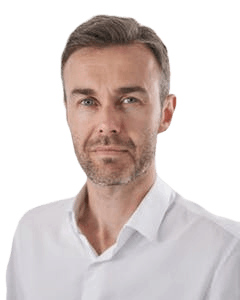
Athlete activism has continued to chip away at the edifice of centralised marketing in recent weeks as the United States Olympic and Paralympic Committee (USOPC) and the British Olympic Association became the latest sports bodies to dilute their restrictions concerning personal endorsement deals.
The organisation joined their equivalents, the German Olympic Sports Confederation (DOSB) and the Australian Olympic Committee, in granting athletes greater freedoms to promote their sponsors during next year’s Olympics in Tokyo.
The four NOCs are the first to respond to a process set in motion when the German cartel office challenged the IOC over its Rule 40 marketing restrictions in 2017. The competition regulator argued that the rule – which forbids athletes from promoting their sponsors during the Olympic Games in order to protect the exclusivity of the IOC’s TOP marketing programme – effectively gave the IOC and DOSB a monopoly over marketing rights and harmed the earning abilities of German athletes. Faced with the possibility the restrictions would be similarly challenged in other jurisdictions, the IOC’s response was to effectively outsource the problem, devolving the implementation of Rule 40 to each of its NOCs.
Inevitably this has created a patchwork of conflicting guidelines within different markets. Global Athlete, the organisation that emerged last year to give athletes a stronger voice in sport, has called on the IOC to mandate all NOCs to relax their Rule 40 protocols to create a level playing field for all of the Olympians it represents.
It’s easy to understand why the IOC has resisted grasping this particular nettle, at least from a commercial perspective. It realises that the way the TOP programme is structured makes it acutely vulnerable to attacks on its exclusivity. The clean sites policy it operates at the Olympic Games robs it of a tool with which it might compensate sponsors.
Ahead of its renewal with the IOC last year, TOP sponsor Visa commissioned a study comparing the return on investment generated by its sponsorship of the Olympics and its sponsorship of Fifa. The study found the latter delivered four times the quantifiable return on investment, thanks to the perimeter advertising permitted at the Fifa World Cup. The thing that motivated the brand to renew its TOP deal until 2032 – aside from keeping Mastercard out of the category – was its ‘unquantified’ assessment that the Olympic brand was stronger than Fifa’s, and that the association lifted Visa’s own brand equity.
The business case for becoming a TOP sponsor becomes difficult to justify when a partnership with an athlete can offer some of these attributes for a fraction of the cost. And the more individual athletes are permitted to exploit this rarefied IP, the less value it has, and the more likely it is the IOC will have to completely revise the way it takes its sponsorship rights to market.
IOC television and marketing services managing director Timo Lumme has already hinted that the organisation may have to introduce perimeter advertising at the Olympics if Rule 40 continues to be diluted. But he would need to see hard evidence that greater athlete marketing freedoms are damaging TOP before making such a dramatic shift in its commercial strategy.
A much more palatable approach might be to try to keep a lid on the most egregious attempts by brands to ambush its IP and take lessons from how different NOCs try to deal with this hot potato. In this regard, the USOPC’s marketing guidelines could prove to be the most instructive. Its new code requests that a US Olympic or Paralympic athlete register their sponsors ahead of the Games and that these companies sign a ‘Personal Sponsor Commitment’. Cleverly, this will put the USOPC in a much stronger position to block or win damages for a rights violation and might make unofficial sponsors more reluctant to take liberties with their creative campaigns.